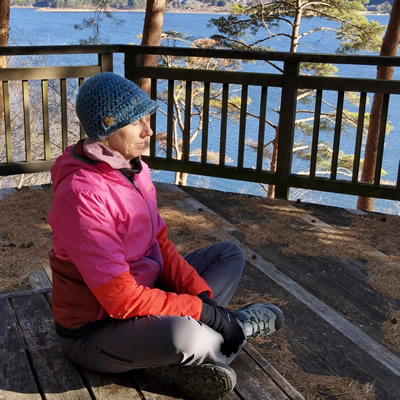One of my favorite lines from the Bhagavad Gita states that we alone can be the friend to ourselves or the enemy to ourselves. From last week’s blog, the message was that anxious and uncomfortable emotional reactions don’t need to be fixed. Because when we come at emotions from a ‘fixer’ attitude, we end up being an enemy to ourselves. The next question is what do we do instead when there is a difficult emotional reaction that allows us to be a friend to ourselves? Let’s continue our exploration in the Yoga of Emotions.
DEALING WITH NEGATIVE REACTIONS
I’m going to let one of the sutras from Patanjali Yogas Sutras be my guide here:
“When aware of negative thought waves, cultivate the opposite.” PYS (2.33)
First, I want to be clear what this sutra IS NOT saying because I know the mind can interpret this in a way that ends up back in a ‘fixer’ mentality. The Yoga Of Emotions is a process that helps us to move away from judging and fixing.
1. This does not mean when a negative emotional reaction occurs to immediately be positive. This ends up ignoring the reaction and forcing a positive reaction, like just putting a smile on your face. Frankly, as a woman, I’ve been told that message far too long and it’s been more like a pressure cooker in my life. Grin and bear it until it becomes too much and then explode in a situation that was way overboard. Yoga isn’t about creating more regrets, it’s about facing what is happening to move through it, gaining self-understanding in the process.
2. It doesn’t mean that negative thought waves are ‘bad’ or ‘wrong.’ Please remember this – there is no ‘good’ or ‘bad’ in Yoga. This black and white thinking comes from judgement. And I don’t think there’s a Yoga text or enlightened Guru out there that tells us to ‘be judgmental.’ The word that is used often is ‘equanimous,’ which means to remain equal in your reaction to both seemingly ‘good’ and ‘bad; things.
3. This process of cultivating the opposite doesn’t happen just through thinking. In fact, most likely your first reaction about what to do differently isn’t what would be most helpful to you or the situation. Many times our thinking is the very thing limiting us and creating that negative thought wave in the first place. Your mind is part of what needs to be cultivated differently!
AWARENESS OF WHAT?
The first key in this sutra is the word ‘aware.’ What is awareness?
It is paying attention to something, an observation. The most important thing to observe, according to Yoga of Emotions, is self. Why? Because that is the only thing you truly have control over: How your ‘self’ reacts to everything that is happening and the choice of your response. Most of us don’t do this. We think we do…but in reality, our mind is highly conditioned to pay attention to what is happening outside of ourselves.
What this means is we might pay attention to ourselves. But, only to try to control what is outside of ourselves.

Photo by Timur Weber on Pexels
Here’s an example:
A friend recently asked me how I would meet a situation that creates conflict with someone that is barely known to them. She shared an experience once with someone who ‘was rude’ and thought afterwards what she wanted to say, which was ‘That was rude.’
I had her say something to me and I said, in a forceful tone, “That was rude.” She laughed and told me she wouldn’t say it like that. So, I tried again in a direct but matter-of-fact manner. She didn’t quite like how it landed. “There’s some shame.”
Next, I had her talk to me again and I stated, “What did you mean by that?”, in a curious tone.
“Ohhhh, yes. I get it,” was her reply.
My friend was aware that she felt hurt and wanted to communicate this, which I understand. But in that moment of feeling ‘hurt,’ she came from a place of protection. Those of you who are Brené Brown fans might recognize this as ‘Armoring Up.’ In the end, it feeds into the conflict and creates even more hurt, which leads to more defensiveness.
Depending on how much internal work you’ve already done in your life, you’ve had some experience in being aware of emotions. What about thoughts and body sensations?
EXPANDING SELF-AWARENESS
Emotions, thoughts, and body sensations make up a reaction. This is what we want to become a master of awareness towards.
In the example, my friend was aware of her emotion and labeled it as ‘negative’. But are uncomfortable emotions the only ones that are ‘negative’? I’ve worked with enough people who struggle with substance abuse addictions to know that using a substance can happen just as easily from an emotion that brings pleasure. “Celebration…well, of course I’ll have a drink for that.”
Y es, a good place to start is with thought waves that bring up a negative emotional reaction. Just know that some pleasurable emotions can also be ‘negative.’ Which is another reason why judging emotions as ‘good’ or ‘bad’ can limit us and keep us stuck.
es, a good place to start is with thought waves that bring up a negative emotional reaction. Just know that some pleasurable emotions can also be ‘negative.’ Which is another reason why judging emotions as ‘good’ or ‘bad’ can limit us and keep us stuck.
To sum up the first part of this sutra – practice becoming aware of your reactions and the thoughts they create within you. This is what needs to be refined. All paths of Yoga, including Yoga for Emotions, lead us within for Self-understanding.
THE POWER OF CULTIVATING
I…love…this…verb – cultivate.
This word is powerful. It is why Patanjali Yoga Sutra 2.33 is not about a quick fix. To cultivate a garden takes time, effort, love, and patience. This is the attitude we want to use with negative thought waves and emotional reactions as we try to invite the opposite thought waves to grow and flourish.
Take some time and get clear for yourself – what does it mean to cultivate something different?
Patanjali is very specific that the effort we are putting towards ‘doing things differently’ is the opposite of that negative thought wave.
Back to the example above. My friend’s thought waves were fueled by being hurt and wanting to teach that person a lesson so they would stop hurting others. She wanted to make them aware. I get this! I mean none of us can change something we aren’t aware of, right?
AND there’s more than one way to use a situation as a teaching moment. Teaching through shame just breeds more shame. Shame separates, isolates, and breeds more negative thought waves. So, this would not be the action Yoga invites us to practice.
My suggestion to her, in asking a curious question, has the possibility of cultivating a couple things. The first is a boundary. It can send the message that I’m not taking responsibility for that comment. In other words, not taking it personally.
Second, it puts the responsibility of the statement back on the person who said it.
And a bonus…it gives you more time and space to calm yourself, be aware, and listen instead of being on the defensive. When we react, taking time for ourselves, to calm the nervous system reaction, is the number one action to start with. Remember what I mentioned in the third ‘what not to do’ at the beginning of this blog post – the mind state that created the reaction is what needs to be cultivated differently.
FOCUS ON THESE STEPS

Photo by Lisa from Pexels
The final summary to practice Yoga of Emotions:
- Practice becoming aware of your reactions and the thoughts they create within you.
- Those that you discern as ‘negative’ are the ones to focus on.
- Focus on taking time to change your mind state and get clear on what ‘opposite’ you want to cultivate instead.
- Practice an action that comes from this new intention to ‘replant’ your mind to weed out negative thought waves.
 Shanti.
Shanti.
P.S. Are you ready to dive into practicing Patanjali Yoga Sutra 2.33? I’d love to chat because I might be able to help…it’s one of my specialties. Reach out at any time and schedule a time to meet!

